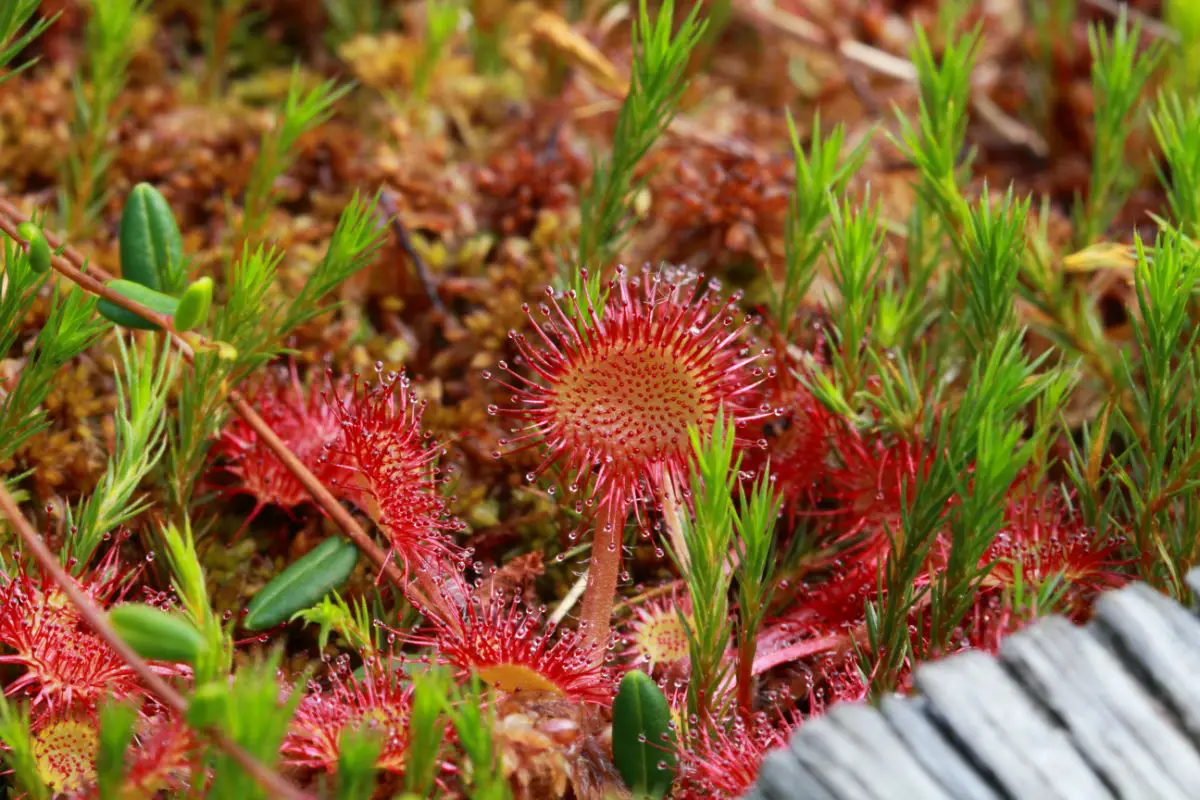Have you ever wondered why carnivorous plants eat insects? It seems odd that a plant would eat another living creature, but it is entirely essential for the survival of these plants!
These specialized and fascinating organisms have evolved to consume insects to supplement their nutrient-deficient environment.
In this article, we will explore why carnivorous plants rely on consuming insects as part of their diet and consider some different types of carnivorous plants.
Types Of Carnivorous Plants
The main reason why these types of plants eat other plants is simply an issue of resources.
Most carnivorous plants live in areas where getting the right nutrients is challenging, so when they can’t get their nutrients from other sources, they have to eat ‘meat’ in order to survive. There are several types of carnivorous plants that feed in different ways.
Pitcher Plant
The first type is the pitcher plant, which has a cone-shaped structure with downward-pointing hairs inside it. Insects get trapped by these hairs and fall into the liquid at the bottom of the pitcher, where they are digested by enzymes secreted by the plant.
Venus Flytrap
The second type of carnivorous plant is the Venus Flytrap, which lures insects in with sweet nectar and traps them using two hinged lobes that close when triggered.
The lobes contain tiny hairs that detect movement, allowing the plant to trap its prey quickly and efficiently.
Sundews
Lastly, there are sundews, which use sticky tentacles to capture their prey. When an insect lands on a sundew’s tentacle, it gets stuck to it and is eventually digested after being stung by digestive enzymes released by the plant.
By feeding on insects, these carnivorous plants are able to obtain essential nutrients like nitrogen and phosphorus that are not available in most soil environments.
Insect Attraction Strategies
Carnivorous plants have developed intricate strategies to attract their insect prey. Some of the most common methods used by these plants are color, smell, and nectar production.
Color

Color plays a huge role in attracting insects. Carnivorous plants often feature bright colors such as reds, purples, and yellows to draw the attention of their prey. These colors can be seen from far away and are easy for the insects to spot.
Additionally, some carnivorous plants have markings on their leaves or petals that resemble an insect in order to deceive and lure them closer.
Smell
Besides color, certain carnivorous plants also use smells to attract insects. They release distinct scents that can only be detected by certain species of bugs in order to draw them in for a meal.
In some cases, the smell is so alluring that it can even attract multiple types of insects at once!
Nectar
Finally, many carnivorous plants produce sweet nectar which lures bugs close enough for them to become ensnared by the plant’s specialized ‘traps’ – like sticky hairs or snap-trap leaves -and consumed as food.
Nectar production is especially beneficial for species with weak traps, since they rely heavily on enticing prey with sugary secretions instead of capturing them mechanically.
Digestive Processes Of Carnivorous Plants
Carnivorous plants employ several methods to digest their prey. Once an insect has been trapped, the plant secretes enzymes that break down the insect’s body into smaller pieces for absorption.
Other carnivorous plants rely on microbial action to digest their prey. The bacteria and fungi present in the soil help to break down proteins, carbohydrates, and other nutrients from the insect’s body, making them available for absorption by the plant.
The digestive process of carnivorous plants can take anywhere from a few hours to several days, depending on the species of plant and size of prey.
Furthermore, some species can even store food in specialized organs, so they can consume it slowly over time. This slow digestion helps ensure that most of the energy gained from eating insects is absorbed by the plant.
Carnivorous plants are able to extract vital nutrients and energy from their prey, which helps them survive in nutrient-poor habitats like bogs and marshes, where other plants may struggle to grow.
These adaptations make them an important part of many ecosystems worldwide and provide a fascinating example of how organisms have evolved over time in order to survive and thrive in different environments.
Benefits Of Eating Insects
Carnivorous plants benefit from eating insects in a variety of ways. Firstly, as we’ve mentioned, it provides them with essential nutrients like nitrogen and phosphorus, which are not available in the soil.
Insects also help carnivorous plants to obtain macro- and micronutrients, which are necessary for survival. Secondly, consuming insects helps carnivorous plants to absorb more water from their environment.
By eating their prey, the plant is able to access the moisture contained in the insect’s body. This helps them stay hydrated when the environment is dry or when there is limited rainfall.
Finally, by preying on insects, these plants can protect themselves from being eaten by larger predators such as birds and mammals.
Predators often mistake a carnivorous plant for an ordinary one that does not contain any prey items and thus avoid attacking it. In this way, carnivorous plants can keep themselves safe while obtaining nutrients and water from their prey at the same time.
Conclusion
In conclusion, carnivorous plants benefit the environment by keeping insect populations in check. They attract insects with a variety of methods, including scent, color, and even movement.
The digestion process is complex and involves enzymes to break down proteins. Although these plants are amazing organisms, human interference can disrupt their delicate balance and cause them to become endangered.
To help support these species, we need to make sure they have access to all the nutrients they need for survival.
By educating ourselves about the importance of carnivorous plants, we can ensure that future generations will be able to enjoy them as much as we do today.

